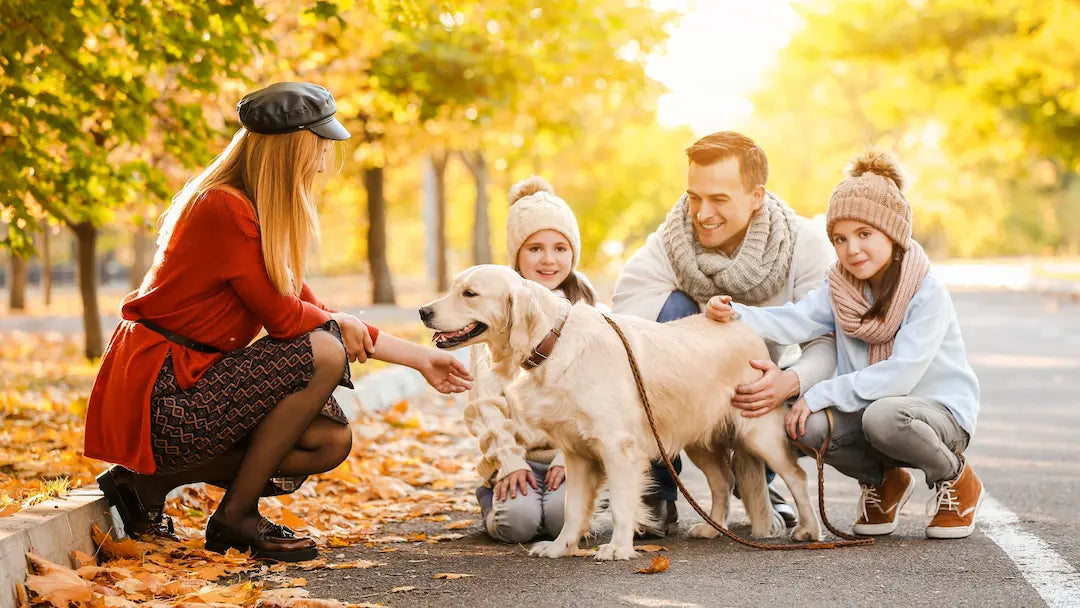Dog Safety: Tips for Preventing Accidents and Injuries at Home and on Walks
As pet owners, it's our responsibility to provide a safe environment for our furry companions. Dogs, curious by nature, can easily get into accidents or sustain injuries both at home and during walks. However, with some precautionary measures and awareness, we can greatly reduce the risk of harm. Today we would like to discuss valuable tips on keeping your dog safe, ensuring their well-being, and offering you peace of mind.

Creating a Safe Haven at Home
Your home should be a sanctuary where your pooch can roam freely without encountering potential hazards. Here's how you can make your home a safe environment:
- Secure Your Space: Dogs are naturally curious and may explore areas they shouldn't. Secure off-limit areas with baby gates or by closing doors to prevent access to hazardous areas like the kitchen or laundry room.
- Store Chemicals and Medications Safely: Keep all household cleaners, chemicals, and medications in locked cabinets or high shelves. Dogs can inadvertently ingest toxic substances, leading to serious health issues.
- Tidy Up Cords and Wires: Dogs may chew on electrical cords, which can result in electric shock or other injuries. Secure cords out of reach or use cord protectors to prevent chewing.
- Remove Small Objects: Small objects like toys, coins, or buttons can pose a choking hazard. Regularly scan your floors and ensure that potential hazards are picked up and put away.

Outdoor Safety Measures
- Leash and Collar: Whenever you take your dog outside, always have them on a leash and securely attached to a collar or harness. This prevents them from running into traffic or getting lost.
- Identification Tags: Ensure your dog wears an identification tag with your current contact information. Microchipping is also highly recommended, as it increases the chances of a lost dog being reunited with their owner.
- Avoid Extreme Temperatures: Dogs are sensitive to extreme temperatures. During hot weather, avoid walking your dog during peak heat hours to prevent heatstroke. In cold weather, provide appropriate winter gear to protect them from the cold and frostbite.
- Watch for Toxic Substances: Keep an eye out for potentially harmful substances on your walks, such as antifreeze, pesticides, or plants that are toxic to dogs. Ingestion of these substances can be fatal.

Supervision and Training
- Supervise Playtime: Always supervise your dog during playtime with other pets or children to prevent any accidents or aggressive behaviour.
- Train Basic Commands: Teaching your dog basic commands like "sit," "stay," and "come" can be life-saving. It allows you to gain control in potentially dangerous situations, such as when your dog is about to run into traffic.
- Socialization: Properly socialize your dog to ensure they are comfortable and well-behaved around other animals and people. This reduces the likelihood of fear-based aggressive behaviour.

Regular Veterinary Care
- Vaccinations: Keep your dog up-to-date on vaccinations to prevent diseases and infections.
- Wellness Exams: Schedule regular check-ups with your veterinarian to detect any potential health issues early on.
- Preventative Measures: Follow your veterinarian's advice regarding flea and tick prevention, heartworm medication, and any other necessary preventative measures.
Taking proactive steps to prevent accidents and injuries at home and on walks is crucial for the well-being of your furry friend. By creating a safe environment at home, practicing outdoor safety measures, providing supervision and training, and ensuring regular veterinary care, you can significantly reduce the risk of accidents and injuries. Remember, a safe and healthy dog is a happy dog, and your commitment


























